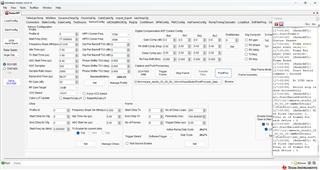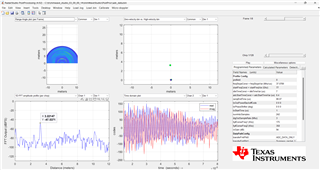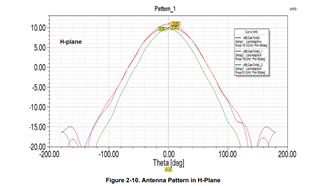Other Parts Discussed in Thread: AWR2243
Tool/software:
Hello,
I am calculating SNR for a corner reflector with rcs 10 m2.
Chirp Config:



I am using this formula for calculation.
I have doubt regarding the value of Gr, Gt values. Where to get these values for awr2243?
where Tc is chirp time = idle time + ramp end time (correct me if wrong)
N = no. of chirps
F is noise figure of receiver right?
noise figure for awr2243 is 13db.Should I take this value or is there another formula to get F?

what i did is, take value from this graph as 10.85 db for both antenna gain.Please correct me if i am wrong.
How is it even possible when what max Rx gain possible for awr2243 radar is 52db as mentioned in data sheet.

Lastly the values i put in that equation are in units respectively:
Regards,
Ajit



